
Roaring Spring is a borough in Blair County, Pennsylvania, United States. The population was 2,392 at the 2020 census. It is part of the Altoona, PA Metropolitan Statistical Area

Guilford is an unincorporated community located in Howard County in the state of Maryland. The location is named after the Guilford Mill. Guilford is near Kings Contrivance, one of the nine "villages" of Columbia.

Lane's Mill was a gristmill, sawmill and fulling mill on Four Mile Creek in Section 31 of Milford Township, Butler County, Ohio.

The Jarrell Plantation State Historic Site is a former cotton plantation and state historic site in Juliette, Georgia, United States. Founded as a forced-labor farm worked by John Jarrell and the African American people he enslaved, the site stands today as one of the best-preserved examples of a "middle class" Southern plantation. The Jarrell Plantation's buildings and artifacts all came from the Jarrell family, who farmed the land for over 140 years. Located in the red clay hills of the Georgia piedmont, It was added to the National Register of Historic Places in 1973. It is a Georgia state park in Jones County.

Kirby's Mill is a historic grist mill in Medford, Burlington County, New Jersey, United States. Originally known as Haines Mill, it was built in 1778 by Isaac Haines and partners along the Southwest Branch of Rancocas Creek. It was the last commercial operating mill in New Jersey.
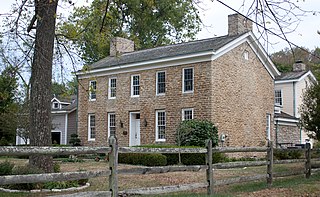
The Elliott House is a historic residence in the city of Indian Hill in northeastern Hamilton County, Ohio, United States. Constructed in 1802, this farmhouse once served as the hub of an industrial operation, and since that time it has been named a historic site.

The Tuthilltown Gristmill is located off Albany Post Road in Gardiner, New York, United States. It was built in 1788, as the National Register reports, and has been expanded several times since.

Laurel Mills is an unincorporated community in Rappahannock County, Virginia, United States. It is located in the southern part of the county, approximately halfway between Amissville and Washington. Laurel Mills is located along the Thornton River in Rappahannock County on Route 618, between Viewtown and Rock Mills.

The Newlin Mill Complex, also referred to as The Newlin Grist Mill, is a water-powered gristmill on the west branch of Chester Creek near Concordville, Pennsylvania built in 1704 by Nathaniel and Mary Newlin and operated commercially until 1941. During its three centuries of operation, the mill has been known as the Lower Mill, the Markham Mill, the Seventeen-O-Four Mill and the Concord Flour Mill. In 1958 the mill property was bought by E. Mortimer Newlin, restored and given to the Nicholas Newlin Foundation to use as a historical park. Water power is still used to grind corn meal which is sold on site. The park includes five historical buildings, which were added to the National Register of Historic Places in 1983, and 150 acres (61 ha) of natural woodland.
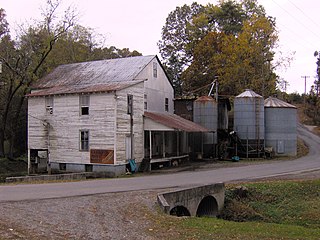
The Clover Hill Mill is a gristmill located in the U.S. city of Maryville, Tennessee. Out of the hundreds of early-20th century mills once scattered across the mountains of East Tennessee, the Clover Hill Mill is one of the few still in operation, and the last such full service mill in Blount County. The mill was added to the National Register of Historic Places in 1989.
The Nathan Wild House is an historic building in Valatie, Columbia County, New York, United States. Built by Nathan Wild, a prominent local figure, in 1826, the original Federal-style building was continually expanded throughout the years as the Wild family's textile mills in the area flourished. The residence was added to the National Register of Historic Places in 1991 as a result of its historical and architectural significance.

The Schuyler Mill, also known as the Ford Soybean Plant Complex, is an old mill site that Henry Ford turned into one of his small village industry factories. It is located at 555-600 Michigan Avenue in Saline, Michigan, and was listed on the National Register of Historic Places in 1996.
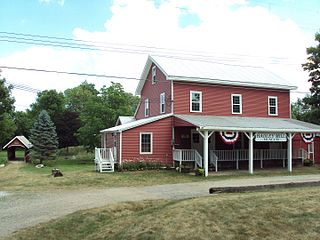
The Hadley Flour and Feed Mill is located at 3633 Hadley Road in rural Hadley Township in southwestern Lapeer County, Michigan. It was designated as a Michigan State Historic Site and also added to the National Register of Historic Places on September 25, 1986.

The Nathan Cooper Gristmill is a historic gristmill on the Black River located at 66 NJ Route 24 in Chester Township, Morris County, New Jersey. It was added to the National Register of Historic Places on November 21, 1976 for its significance in industry.
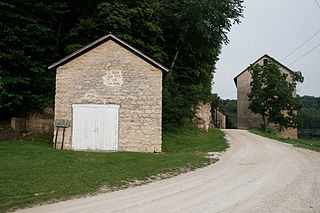
Motor is an unincorporated community in Clayton County, Iowa, United States. The townsite is also a nationally recognized historic district listed as a historic site on the National Register of Historic Places in 1977.
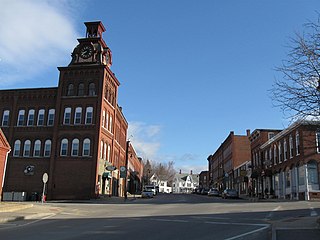
The Suncook Village Commercial–Civic Historic District encompasses the civic and commercial heart of Suncook, New Hampshire, a village on the Suncook River in Pembroke and Allenstown. The civic district is a 3-acre (1.2 ha) area on the Pembroke side of the river, adjacent to the Pembroke Mill, a site that had seen industrial use since the 18th century. The district includes 21 commercial buildings, 19 of which are historically significant. The district was listed on the National Register of Historic Places in 2005.
The Whited Grist Mill is a historic gristmill located at the National Route 66 & Transportation Museum in Elk City, Oklahoma. Ruben Whited built the mill in 1903–04; his family operated the mill for its entire existence. The mill ground corn for Elk City's residents; a sign painted on the outside advertises "CORN GROUND INTO MEAL OR CHOPS AT ANY TIME". A 1928 addition brought a flour mill to the complex as well. The mill closed in 1944 due to replacement machinery shortages during World War II; it was the only gristmill to ever operate in Elk City. In 1985, the mill moved from its original site at 306 E. 7th St. to its current location.

The Bridgewater Woolen Mill, now more commonly the Bridgewater Mill Mall, is a historic textile mill complex on United States Route 4 in Bridgewater and Woodstock, Vermont. With an textile processing history dating from 1828 to 1975, it was one of the state's longest-lived textile operations, and was a mainstay of the local economy during that period. It has since been repurposed into a shopping center. It was listed on the National Register of Historic Places in 1976.
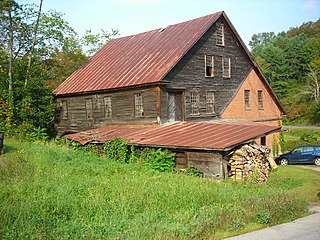
The Hayward and Kibby Mill, also known as the Tunbridge Mill, is a historic industrial facility on Spring Road in Tunbridge, Vermont. It includes a substantially complete water-powered 19th-century grist mill dating back to 1820, with a later sawmill added about 1870. It is one of the few surviving water-powered mills in the state, and is believed to be the only one featuring both a sawmill and grist (grain) mill. It was listed on the National Register of Historic Places in 1992.

The Wooster Sawmill and Gristmill Site is a historic industrial site on Park Road in Oxford, Connecticut. From at least 1747 until 1965 it was operated as a sawmill, gristmill, and cider mill, giving it one of the longest known histories as a water-powered mill complex in the United States. The surviving elements of the complex, its structures now converted to private residential use, were listed on the National Register of Historic Places in 2001.





















